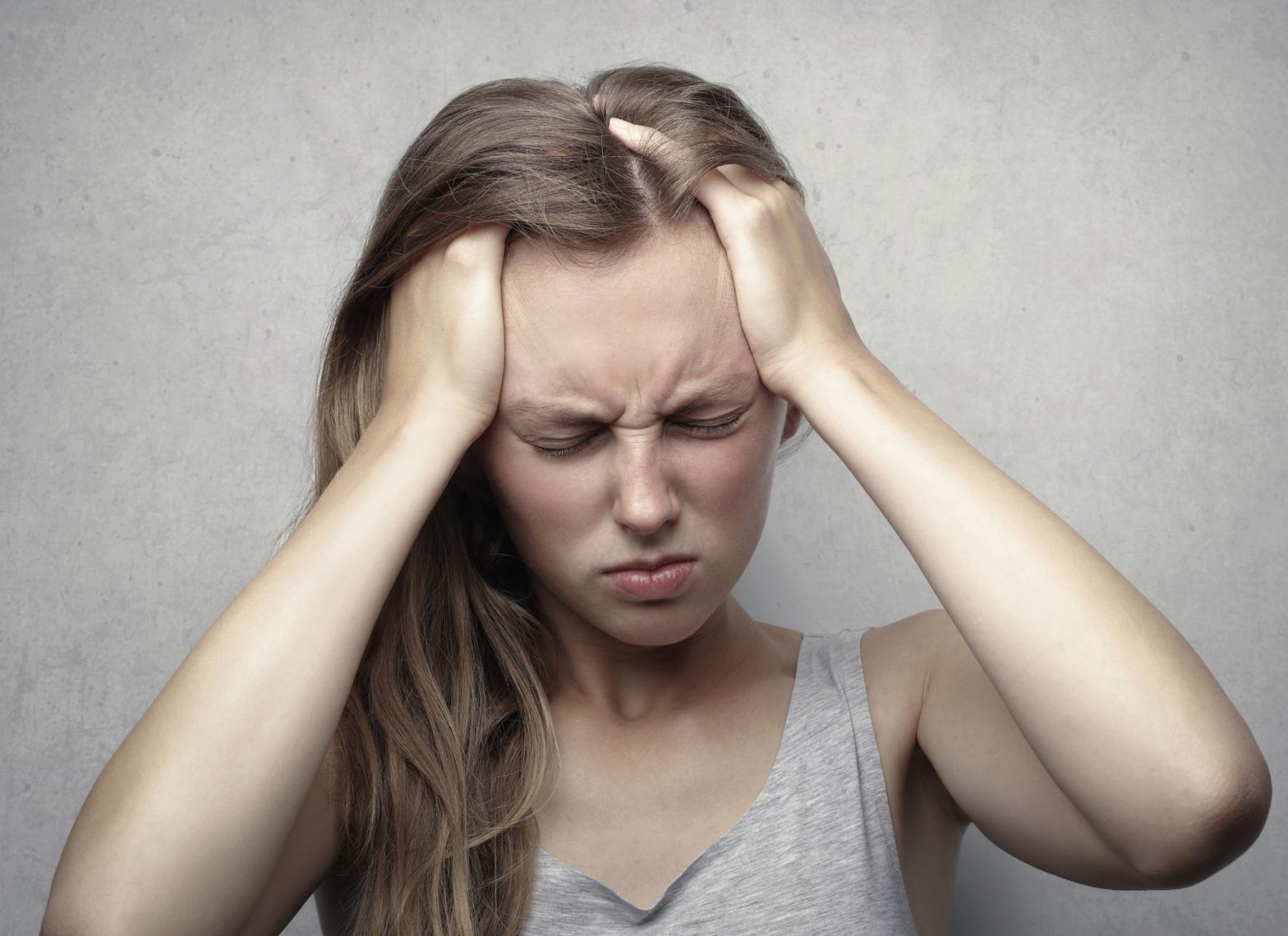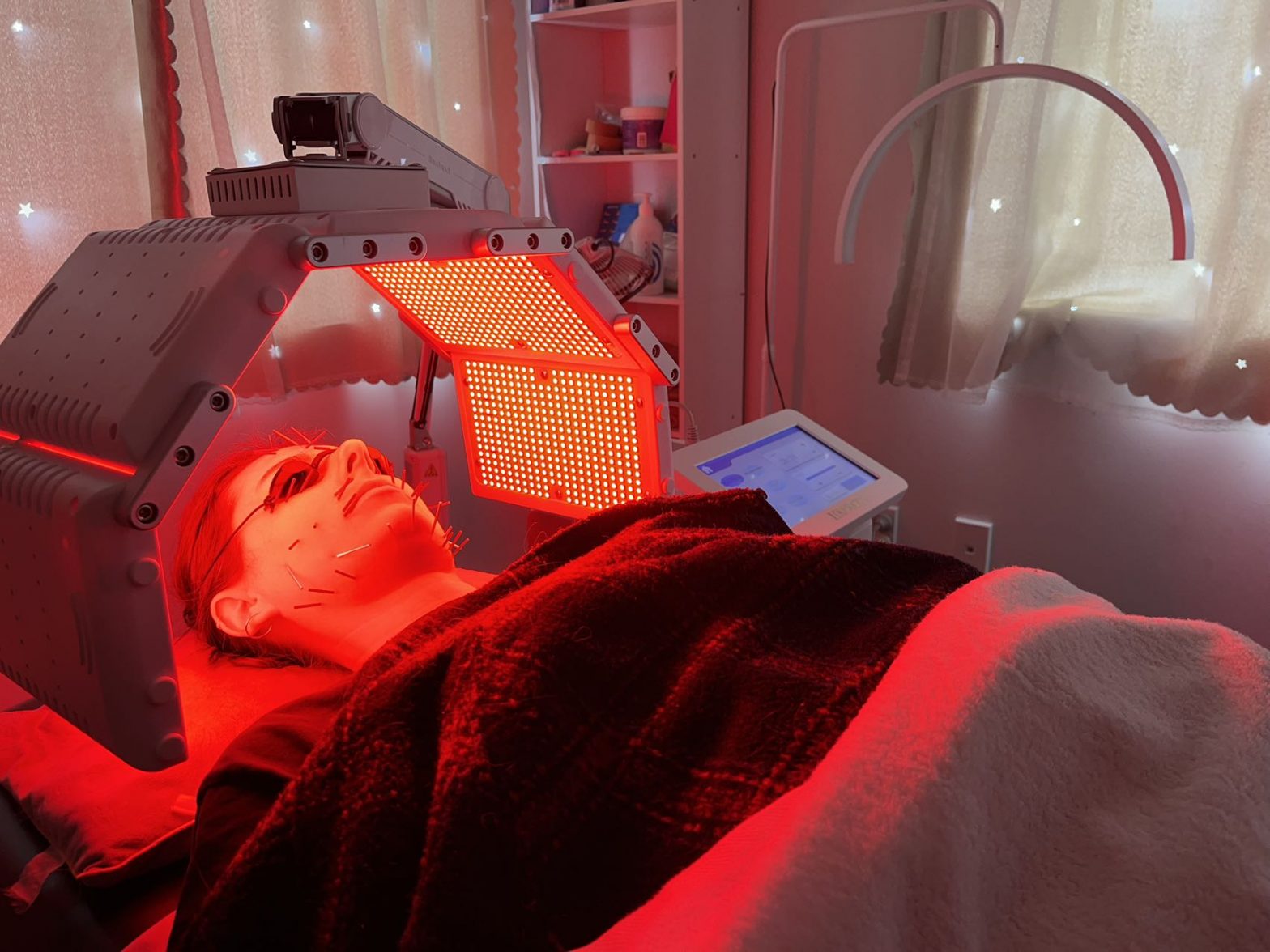Headache is the most common form of pain and a major reason people miss work or school. Most headaches are not a cause for concern. But if you keep getting them, you need to have regular treatments to reduce the impact on your life.
Life-style factors
Factors that lead to headaches may be:
drinking alcohol
eating certain foods, notably processed foods that contain nitrates and MSG
Lack of sleep or changes in sleep patterns
missing meals
Bad posture
fluctuating hormone levels
stress, anxiety or fatigue
fluctuations in atmospheric pressure due to changing weather
caffeine withdrawal
Bright light

Types of headaches and symtoms
In this article, we’ll mainly talk about primary headache. It isn’t a symptom of an underlying disease, such as sinusitis, concussion, blood clot within the brain, etc. A primary headache is caused by overactivity of or problems with pain-sensitive structures in your head.
Tension headache
This is a common form of primary headache. The pain usually arises gradually, in the middle of the day. A person may feel:
as if they have a tight band around their head
a constant, dull ache on both sides of the head
pain spreading to or from the neck or shoulders
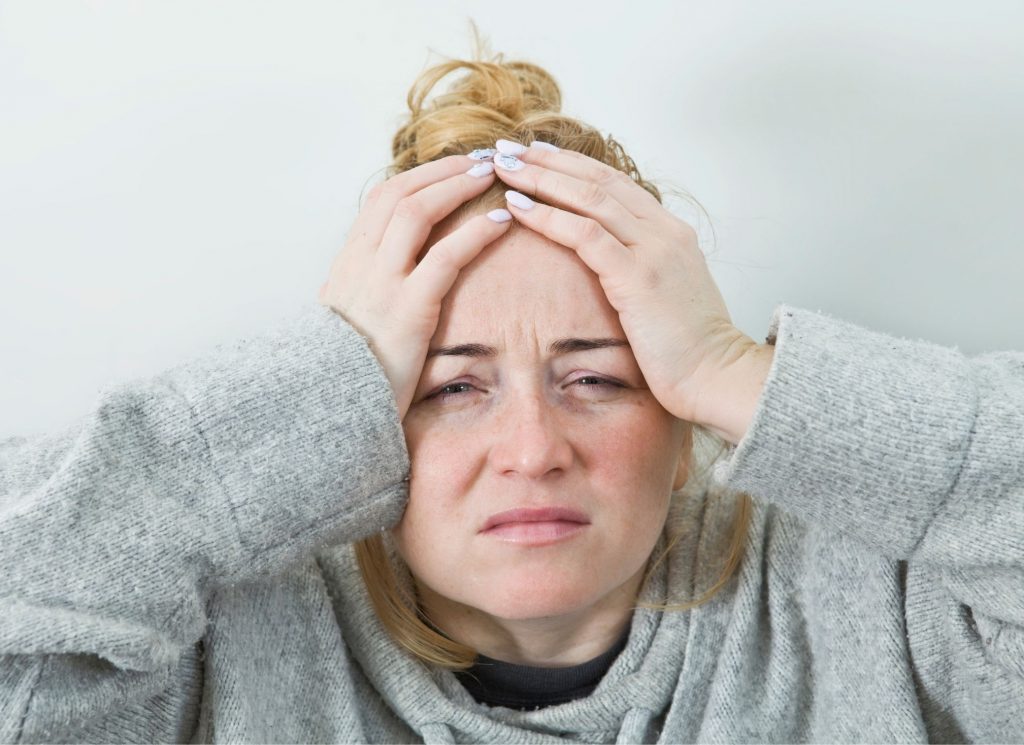
Episodic tension headache can attack usually last from 30 minutes to a week. On the other hand, chronic tension headache can occur on 15 or more days per month for at least 3 months.
Migraine
A migraine headache may involve pulsating and throbbing pain. It often occurs on one side of the head but may switch sides.
During an episode, a person may also experience:
lightheadedness
sensory disturbances, such as changes in vision, known as an aura
sensitivity to light or sound
nausea, possibly with vomiting
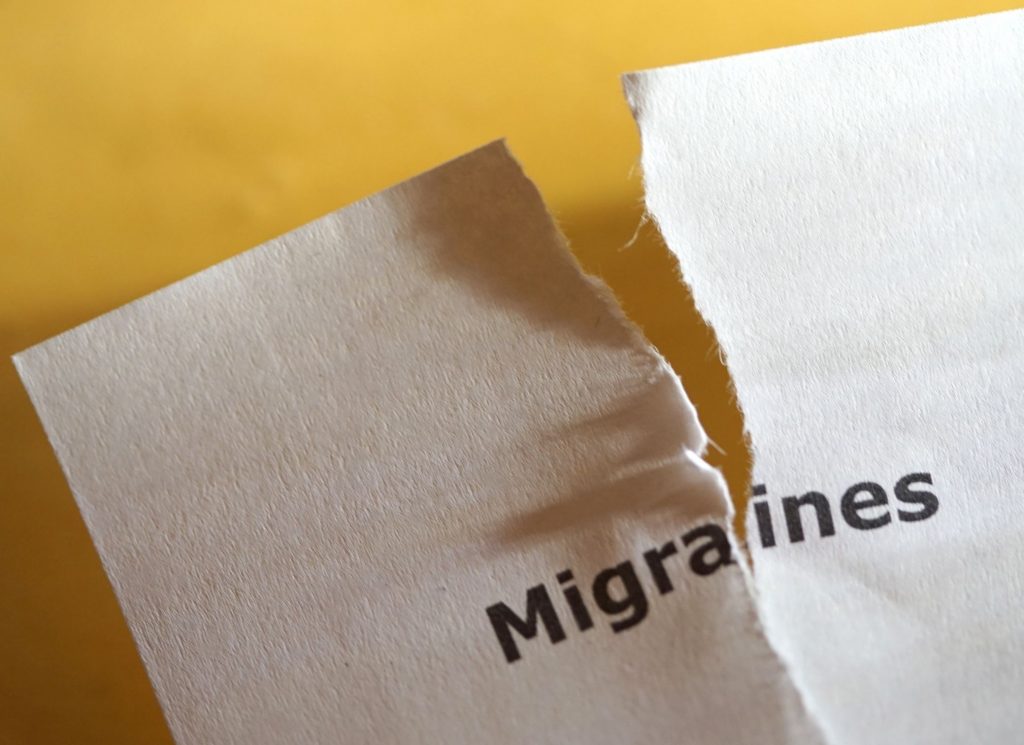
Migraine headaches are the second most common form of primary headache. They can significantly impact the quality of life. A migraine episode may last from a few hours to 72 hours. The frequency of episodes can vary greatly. They may occur from once a week to once a year.
Migraines can be difficult to distinguish from tension headache. Moreover, if you have frequent episodic tension-type headaches, you can also have migraines.
Unlike some forms of migraine, tension-type headaches usually aren’t associated with visual disturbances, nausea or vomiting. Although physical activity typically aggravates migraine pain, it doesn’t make tension-type headache pain worse. An increased sensitivity to either light or sound can occur with a tension-type headache. However, this symptom isn’t common.
Cluster headache
These headaches usually last between 15 minutes and 3 hours. And they may occur one to eight times per day. Cluster headaches often involve:
brief but severe pain
pain around one eye
tearing or redness in the eye
a drooping eyelid
a blocked or runny nose
a smaller pupil in one eye
facial sweating
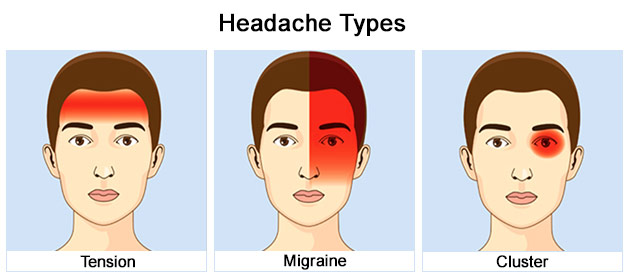
Cluster headaches may arise frequently for 4–12 weeks, then disappear. They tend to happen at around the same time each day.
Between the clusters, the person may have no symptoms. These remission periods may last months or years.
Some common secondary headaches
A secondary headache is a symptom of a disease that can activate the pain-sensitive nerves of the head. Any number of conditions — varying greatly in severity — may cause secondary headaches.
Possible causes of secondary headaches include, for example, acute sinusitis, stroke, brain issues, Covid-19, ear infection, hangovers, flu, overuse of pain medication, trigeminal neuralgia, TMJ headache, etc.
Sinus headache
Migraines and headaches from sinusitis are easy to confuse because the signs and symptoms of the two types of headaches may overlap. Sinusitis, however, usually isn’t associated with nausea or vomiting or aggravated by noise or bright light.
Signs and symptoms of sinus headaches may include:
Pain, pressure and fullness around the eyes, across the cheeks, brow or forehead
Worsening pain if you bend forward or lie down
Stuffy or runny nose
Fatigue
Ache in the upper teeth
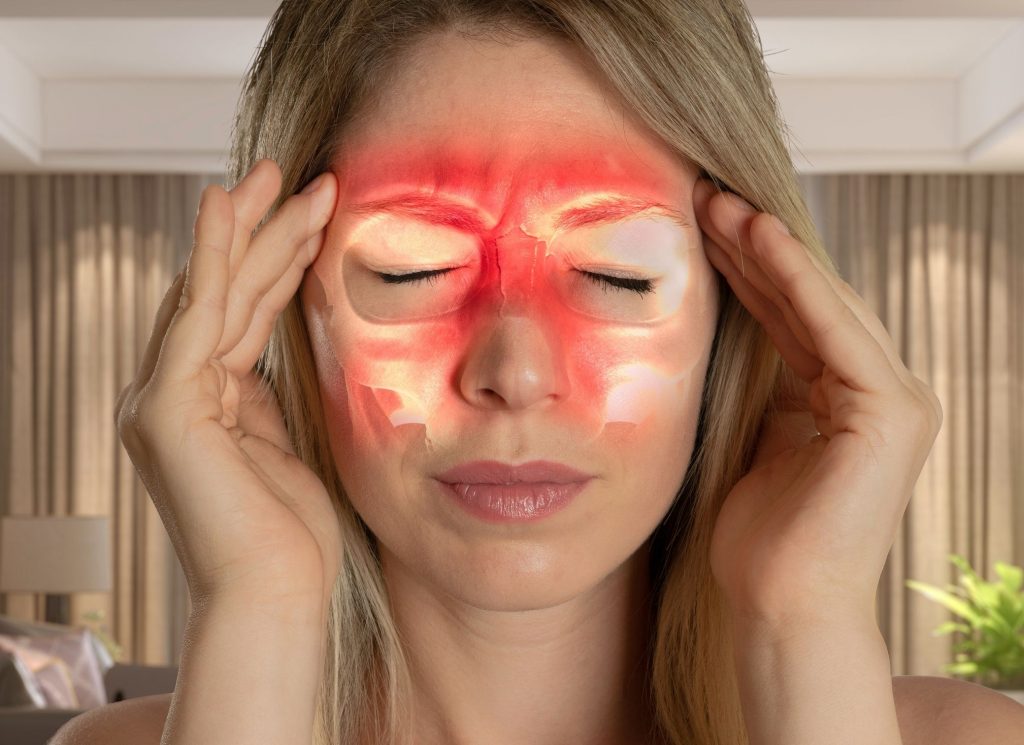
Sinusitis usually occurs after a respiratory infection or cold. And this includes thick, discolored nasal mucus, decreased sense of smell, and pain in one cheek or upper teeth. Headaches due to sinus disease often last days or longer. But migraines most commonly last hours to a day or two.
Medication overuse headache
This was once known as a rebound headache. It occurs if a person uses medication to treat headaches too often. Medication overuse headaches tend to result from taking opiate-based medications, such as those that contain codeine or morphine.

Beyond the headache, a person may experience:
neck pain
restlessness
a feeling of nasal congestion
reduced sleep quality
Symptoms can vary, and the pain may change from day to day.
Thunderclap headache
These are sudden, severe headaches that people often describe as the “worst headache of my life.” They reach maximum intensity in under 1 minute and last longer than 5 minutes.
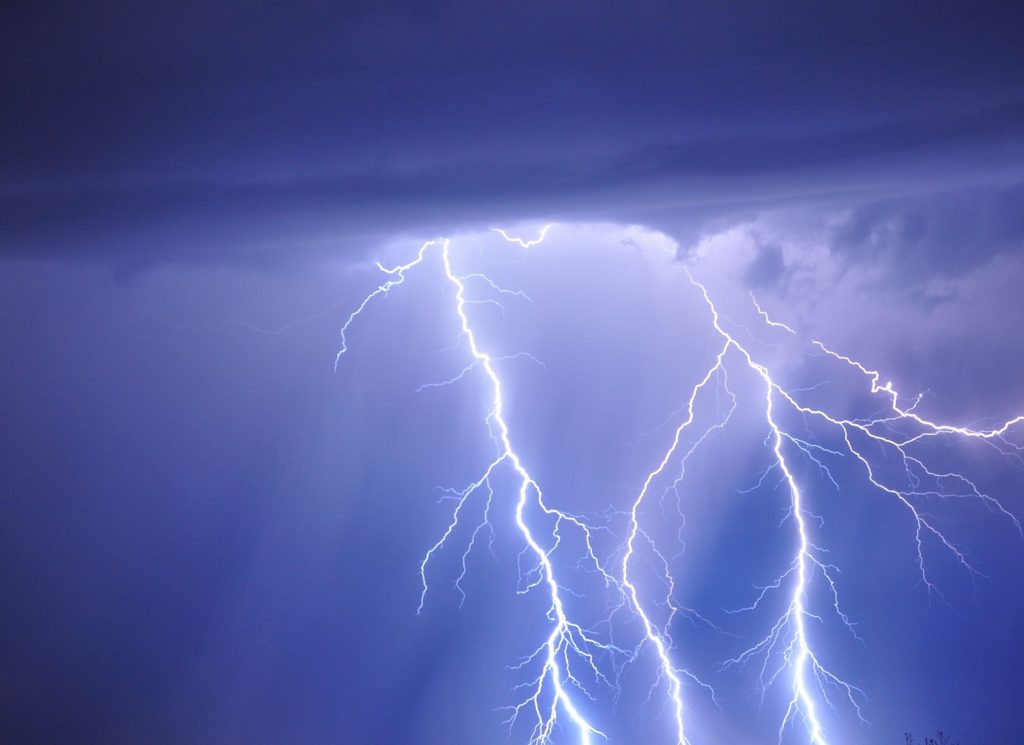
A thunderclap headache is a secondary headache that can indicate a life-threatening condition, such as:
an aneurysm (an abnormal bulge or ballooning in the wall of a blood vessel)
reversible cerebral vasoconstriction syndrome (a narrowing of the blood vessels in the brain)
meningitis (Inflammation of brain and spinal cord membranes, typically caused by an infection)
bleeding in the brain
a blood clot in the brain
People who experience these sudden, severe headaches should receive immediate medical care.
Allied health treatments for headache
Apart from rest and pain relief medication, to prevent medication overuse headaches, it is necessary to follow a doctor’s guidance. In addition, it is benificial to have regular alternative treatments to improve your symptoms and support your general health.
Alternative and integrative treatments include:
acupuncture
cognitive behavioral therapy
traditional Chinese herbal medicine and nutritional health products
hypnosis
meditation
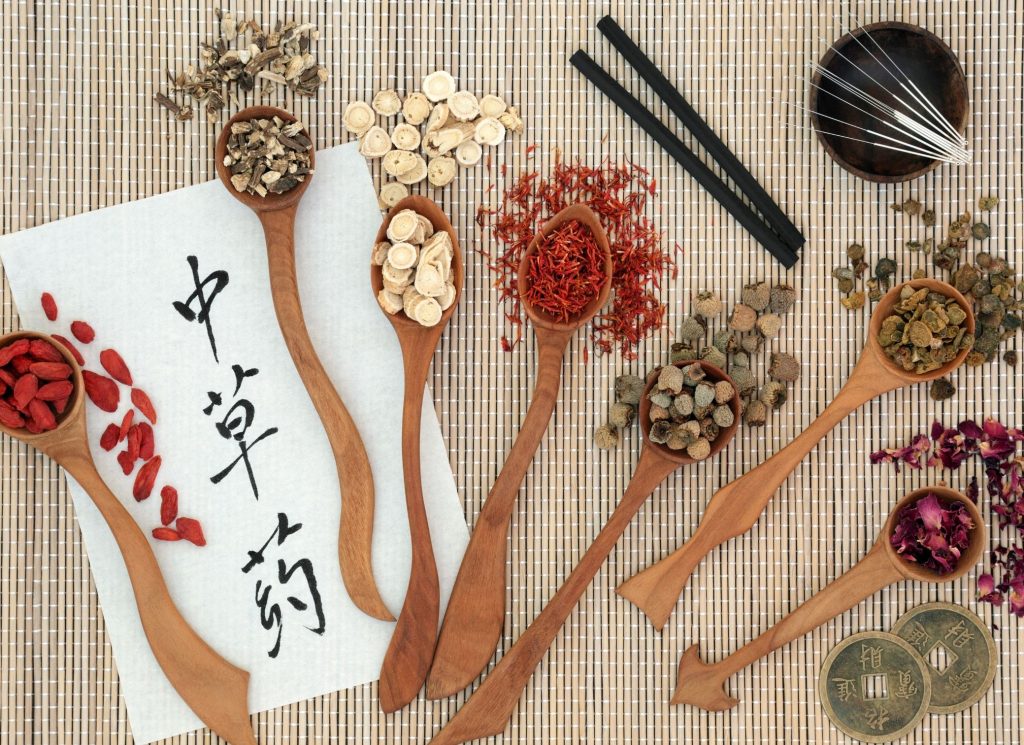
Acupuncture and is widely used to relieve headaches. At Happipuncture Clinic, our acupunctuists and Chinese medicine practitioners will assess the type of headache with both western medicine and traditional Chinese medicine (TCM) diagnosis.
If you are afraid of needles, we can assure you that acupuncture needles are very tiny. And most people don’t feel ‘pain’. You may experience some sensations during your treatment. It can be heavy, flowing, or travelling sensation, all of which are positive responses. Besides, there are other treating methods and techniques in TCM that don’t require needles.
Self-care tips to prevent and ease headache
Apply heat or an ice pack to your head and neck.
Cold or heat compresses on the head and neck are a common home remedy to ease the pain of a headache. A hot bath or shower may also be helpful. Or simply run warm water over your hands and feet.
Have enough water.
Dehydration can trigger a migraine attack or lead to a nonmigraine headache. So replacing the liquids your body needs may help to relieve the pain.

Practice a relaxation technique.
Meditate, breathe deeply, and try to visualize a peaceful image. Various relaxation techniques can significantly help patients who suffer from ‘muscle contraction’ headaches.
Give yourself a massage.
Massage eases muscle tension, and sometimes helps to reduce headache pain. So gently massage your temples, scalp, neck, and shoulders with your fingertips. Or gently stretch your neck.
Do acupressure
You may be able to reduce migraine and headache pain by massaging the pressure point called He Gu (LI4). It is located in the “V” between the thumb and forefinger. Use the thumb of one hand to massage the other hand with a circular motion for 1 – 2 minutes,. Then switch hands.
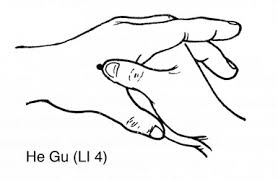
Close your eyes and rest.
Sit or lie down in a quiet, dark room with your eyes closed and just relax for a bit.
Maintain healthy eating habits.
What you put into your body and when can have a big impact on your headaches. Regular meals are important, especially for people who get headaches from low blood sugar. It’s also important to eat a healthy diet rich in fruits, vegetables, and whole grains.
Manage your stress.
Stress can act as a trigger for both tension headaches and migraine attacks. So find ways to manage your stress level, whether through a meditation practice, working with our experienced practitioners, exercising regularly, or a combination of approaches.
Avoid cigarettes.
Smoking tobacco can trigger migraine attacks and nonmigraine headaches. This applies to both the person who smokes, and to those who inhale the second-hand smoke.
Limit your alcohol intake.
Drinking too much alcohol can lead to a hangover in anyone, so limit your alcohol intake is important. For some people with headaches, any type of alcohol is a trigger for a migraine attack. And for others, only certain types of alcoholic drinks trigger attacks.
Last but not least
One’s mental health also plays a big role in chornic headaches. Thus, take the time to find a moment of peace in your day. Keep yourself healthy, and relax and rejuvenate the body, mind and soul.
Contact the Happipuncture team at https://happipuncture.co.nz for any questions about our treatments for headache. Or book a free initial consultation at our North Shore, Auckland clinic today.
Share to someone who often suffers from headache.
Follow us at
